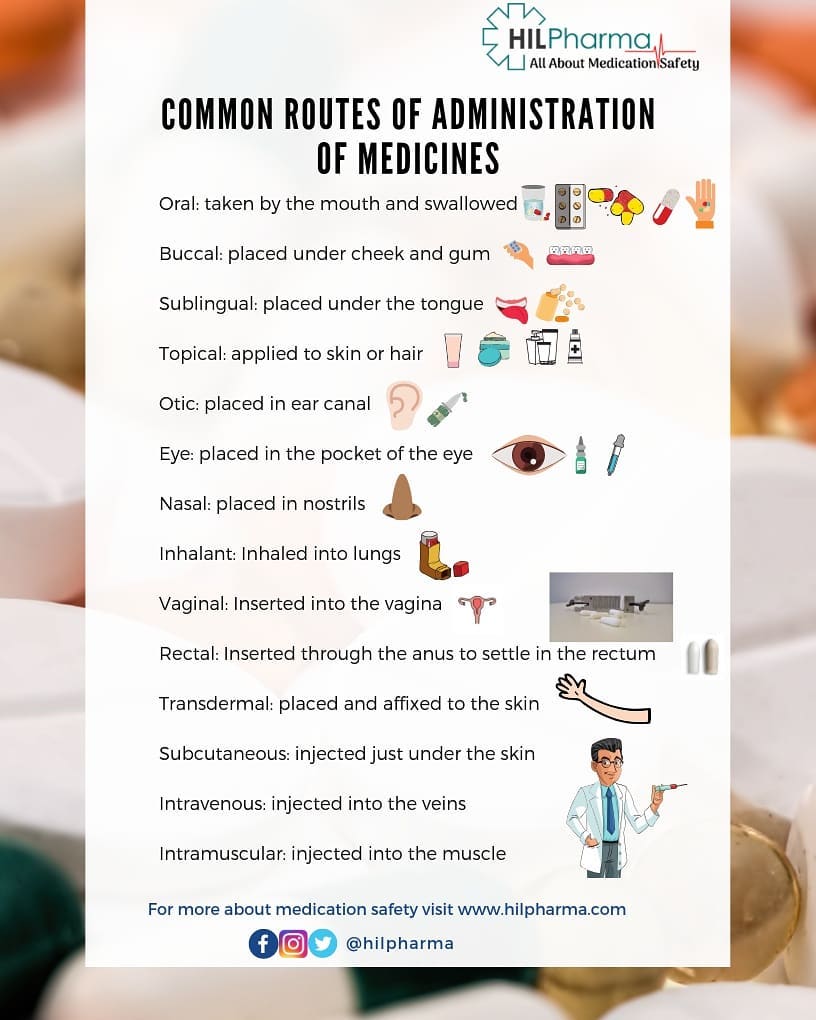A thirsty person goes for water (a good thing) and drinks through the mouth (the right route). Imagine someone tried drinking water through the nose, or laying in a pool of water without actually drinking any and expecting to be filled.
Another one, drinking the body lotion meant to be applied on the skin.
The same goes with drugs; each is specifically designed to pass through a specific route to be effective. Using another route may make it ineffective or even toxic.
Why different routes?
Before listing the various routes, let’s take a look at the why.
Some of us like oral tablets for example, but not all medicines can be made into tablets. The route of administration of a drug depends on many factors such as:
- Age of patient
- Disease treated (is it a local or systemic-more widespread)
- The dosage form (is it sold, liquid, semisolid, or gaseous)
- Ease of administration
- characteristics of the drug (for example some drugs can be digested and destroyed if they pass through the stomach)
The common routes of drug administration
Now the list of common routes and what they mean
- Oral: taken by the mouth and swallowed
- Buccal: placed under cheek and gum
- Sublingual: placed under the tongue
- Topical: applied to skin or hair
- Otic: placed in ear canal
- Eye: placed in the pocket of the eye
- Nasal: placed in nostrils
- Inhalant: Inhaled into lungs
- Vaginal: Inserted into the vagina
- Rectal: Inserted through the anus to settle in the rectum
- Transdermal: placed and affixed to the skin
- Subcutaneous: injected just under the skin
- Intravenous: injected into the veins
- Intramuscular: injected into the muscle

Why is this important?
Knowing and using the right route of administration is so important to prevent medication errors that it is among one of the 5 rights of medication administration (the right patient should be given the right drug at the right time at right dose through the right route)
Which is your favorite?
Don’t forget to share this post!

About the author
Dr. Ekwoge Hilda is a trained pharmacist from Cameroon and Co-founder of HILPharma. When she is not busy creating content, she slings pills to pay the bills.